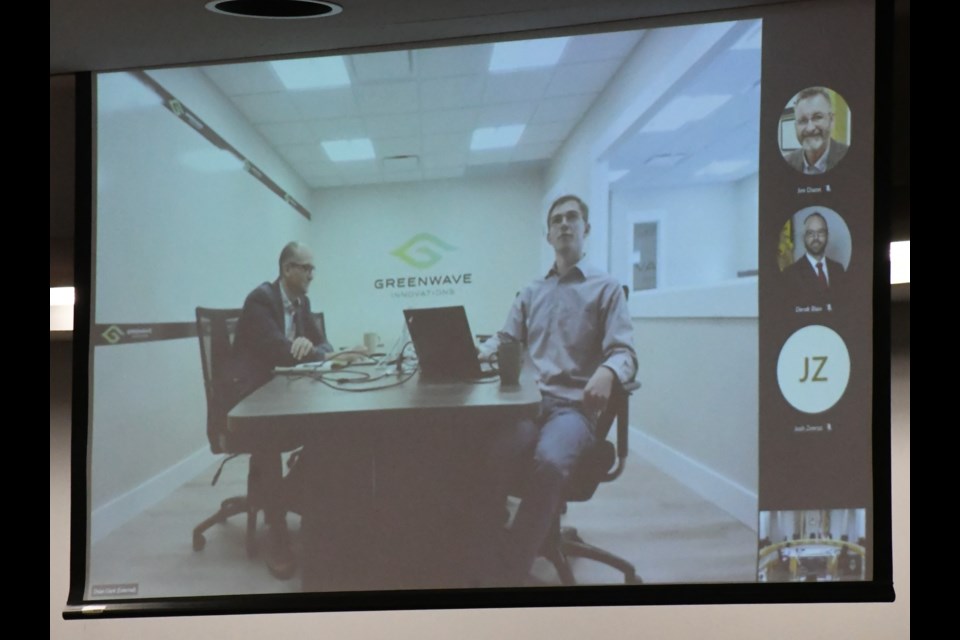It’s been 15 months since the City of Moose Jaw adopted a climate action plan to reduce its greenhouse gas (GHG) emissions and the data suggests the decision is paying off.
The municipality began receiving data about its 10 largest energy-consuming buildings — they comprise roughly 48 per cent of the city’s total corporate emissions — after installing 550 permanent electrical sub-monitoring systems last year.
The city’s climate goals are to reduce its corporate GHG emissions by 20 per cent by 2025 from 2019 baseline levels, reduce its corporate GHG emissions by 45 per cent by 2030 from 2019 baseline levels and fully eliminate water losses within all municipal buildings.
The data shows the city’s efforts reduced corporate GHG emissions to 18,506 tonnes last year from 21,574 tonnes — a 14.2-per-cent reduction — over the baseline period of 2019, according to a city council report.
Furthermore, after installing solar panels at the Yara Centre, Events Centre and city hall, plus new LED lights at Yara Centre, the annual electricity costs there declined by a combined $41,150 and 267 tonnes of GHG were eliminated.
The solar panels are expected to generate 285,156 kilowatt hours of electricity annually, which can power 10.1 homes yearly.
Moreover, upgrades at the wastewater treatment plant reduced costs by $149,500 and eliminated 1,399 tonnes of GHG over the baseline period.
Together, those savings total $190,650, an amount city hall expects to save annually.
City administration presented a report about the city’s climate action plan during council’s recent executive committee meeting, while representatives from Greenwave Innovations — the city’s project partner — discussed the project.
Council signed a four-year contract with Greenwave in January 2022, with the city paying an annual consulting fee of $100,000. The contract’s total value — plus costs to install sub-monitoring systems — is roughly $500,000.
The sub-monitoring devices allow Greenwave to acquire accurate and granular consumption data every minute, which is important for implementing no-cost and low-cost efficiency opportunities, identifying and prioritizing capital expenses and implementing proactive maintenance strategies, said Joshua Zimroz, industrial systems engineer.
There are 73,205.82 square metres (813,398 square feet) of space in the 10 municipal buildings, while there are 68 possible project opportunities — capital and non-capital initiatives — identified this year for energy conservation activities.
The installation of natural gas sub-monitoring units represents the first commercial deployment of this technology in the province, which showcases Moose Jaw as an innovative leader, said Zimroz.
Greenwave plans to install natural gas-related devices in the second half of this year that will provide real-time, minute-by-minute leak detection and notifications. That ongoing analysis can help the company determine whether more equipment should be electrified or upgraded.
Meanwhile, it has installed water sub-monitoring units that pull real-time consumption details from utility meters, which should help eliminate waste and reduce significant water losses, he added. The contractor will also investigate possible opportunities for insurance premium discounts.
Greenwave is targeting five grant opportunities under the Federation of Canadian Municipalities’ Community Buildings Retrofit program to help continue paying for this project, said president/CEO Dean Clark. For example, the company secured $25,000 last year to monitor and analyze the library.
“We’re really hoping this year that the grant money in the program goes up with every phase. We really hope the data makes some of those applications real favourable towards … any capital projects we identify and (on which) we decide to move forward,” he added. “We’re pretty excited about the grant opportunity this year.”
“That’s very good, very impressive,” said Coun. Crystal Froese.
Coun. Jamey Logan agreed, saying, “It’s exciting to see our greenhouse gas emissions go down.”
Committee appointments
During the executive committee meeting, council also appointed several residents to city committees:
- Megan Latta, Kristin Hordyk and Adrian Leister to the public library board
- Donna MacQuarrie-Bye to the community clean-up committee, with Blain Stoke as an alternate
The next executive committee meeting is Monday, March 27.




